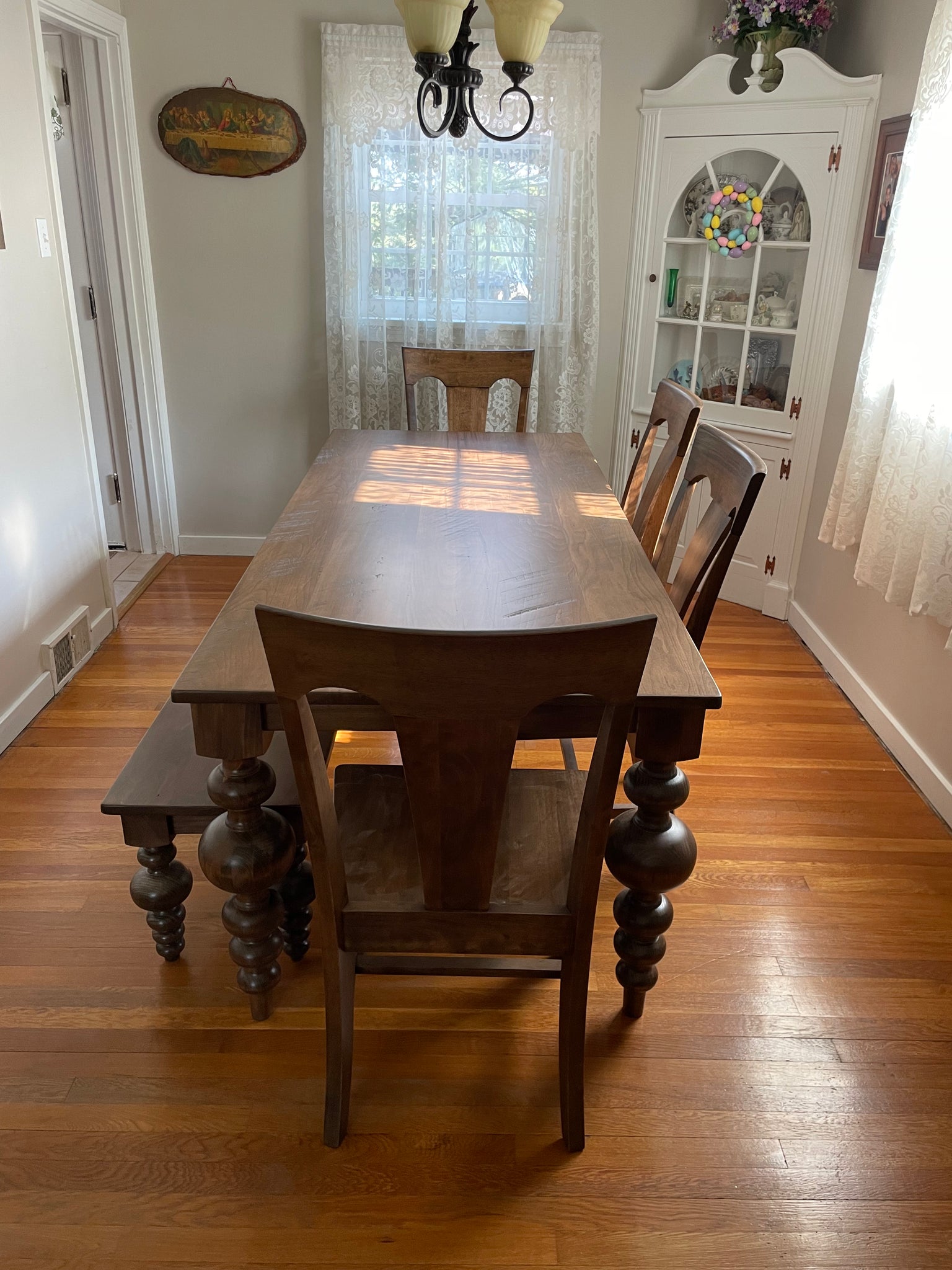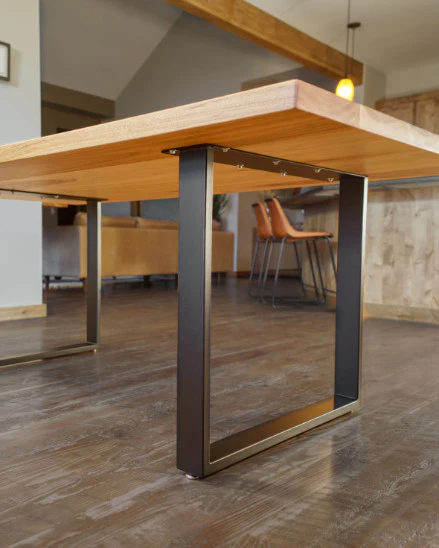How to Choose the Perfect Dining Room Table Legs for Your Home Design
A Thorough Check Out Table Leg Styles: Locating the Suitable Suit
Selecting the right dining table leg style is essential for both aesthetic allure and useful capability. For those with larger tables, trestle legs ensure tough support, whereas hairpin legs introduce a mid-century contemporary vibe with their minimalist design. The x-shaped legs mix contemporary design with enhanced security.
Traditional 4 Legs
Among the different types of dining table leg designs, the traditional four-leg style continues to be an ageless selection for numerous homes. Four legs offer well balanced assistance, making sure the table continues to be secure and qualified of birthing considerable weight (dining room table legs).
From an aesthetic perspective, the conventional four-leg layout can be easily adjusted to numerous interior designs. Whether crafted from wood, metal, or a mix of products, these legs can be delicately sculpted, smooth and minimalistic, or anything in between. Their flexibility permits them to enhance both rustic and contemporary setups perfectly.
In addition, the straightforward structure of the four-leg design promotes convenience of activity and placement within an area. Unlike even more complex bases, this design reduces obstructions, providing ample legroom for restaurants. In summary, the conventional four-leg eating table leg style weds withstanding beauty with practical performance, making it a sharp selection for those looking for both form and feature in their dining furniture.
Stand Base
Often celebrated for its stylish and space-efficient design, the stand base is a recognized option to the typical four-leg configuration in eating table leg styles. This distinctive base usually features a single main column supporting the table top, which can vary in type, from ornately sculpted wood to sleek, modern-day steel. One of the primary advantages of the stand base is its capability to make the most of legroom and seating flexibility. Without corner legs, diners are managed better flexibility of motion, making it an ideal option for round and oval tables that advertise even more intimate and inclusive celebrations.
Additionally, the pedestal base's central support can deal with considerable weight, permitting making use of much heavier table tops, such as marble or thick wood. This toughness combined with its aesthetic versatility makes the pedestal base a preferred choice in both conventional and contemporary indoor setups. It can perfectly incorporate with numerous layout motifs, from classic style to minimal modernity. Additionally, the main column itself provides a canvas for intricate styles and artistic expressions, adding a component of visual rate of interest beneath the table. In recap, the pedestal base integrates capability with design, making it a fine-tuned and practical choice for diverse dining atmospheres.
Trestle Legs
Trestle legs supply a durable and timeless structure for eating tables, defined by their straight cross-bracing and tough support beam of lights. Originating from medieval times, this design has evolved yet retained its essential framework, making it a seasonal fave in both standard and modern setups. The main trestle beam, commonly supported by two or more vertical blog posts, provides remarkable security, enabling larger table lengths without the requirement for extra legs.
A substantial advantage of trestle leg tables is the enough legroom they supply. Unlike tables with four corner legs, the lack of obstructions at the table's sides offers unblocked area for chairs and diners, improving convenience and availability. This makes trestle tables excellent for accommodating bigger events, whether in a dining-room or a banquet hall.
The aesthetic convenience of trestle legs is significant. Readily available in a variety of materials such as wood, metal, and composite, they can be ended up to complement a vast array of interior designs. From rustic farmhouse to sleek modern layouts, trestle legs can be personalized to suit specific preferences. Their enduring appeal and functional advantages make trestle legs an engaging option for those seeking both design and usefulness in their table.
Barrette Legs

The charm of hairpin legs depends on their simplicity and versatility - dining room table legs. Offered in a variety of materials, including steel and brass, they can be finished in countless colors to enhance different indoor designs. Whether matched with a rustic wooden tabletop or a contemporary glass surface, hairpin legs effortlessly mix capability with a touch of classic charm
Sturdiness is another noteworthy attribute of barrette legs. Regardless of their delicate appearance, these legs are crafted to bear considerable weight, making certain the table remains steady and safe. Furthermore, they are fairly very easy to mount, making them a prominent option for do it yourself fanatics and professional furniture go to website manufacturers alike.
X-Shaped Legs

Constructed from products such as steel, wood, or a mix of both, X-shaped legs can be tailored to match numerous layout choices. Steel legs usually provide a sleek and commercial feel, suitable for loft-style houses and modern-day dining rooms. On the other hand, wooden X-shaped legs offer a warmer, extra rustic charm, appropriate for farmhouse or diverse interiors. The flexibility in products enables property owners to customize their dining tables to better fit their total style scheme.
In addition, the design behind X-shaped legs ensures even weight distribution, minimizing the danger of tottering and improving resilience. This makes them particularly fit for larger dining tables that call for added assistance. Basically, X-shaped legs blend sensible engineering with modern-day appearances, making them a classic selection for diverse dining atmospheres.
Conclusion
A detailed understanding of dining table leg styles discloses the unique features and advantages of each design. Trestle legs make certain durable assistance for larger tables, and barrette legs introduce a mid-century modern aesthetic.